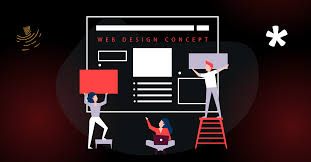A website is much more than just an online presence in today’s digital age; it is a brand’s face, a potential customer’s first impression, and a vital tool for growth. Businesses often grapple with a common challenge: how to make a website visually appealing while ensuring it is practical and user-friendly. This is where a professional web design company steps in, blending creativity with functionality to deliver sites that are not only attractive but also efficient in performance and purpose.
The Art Of Creative Design
Creativity in web design goes beyond choosing colors and images. A web design company takes time to understand the essence of a brand and communicates it visually. This might include unique layouts, striking graphics, or innovative typography that capture the personality of the business. In a congested digital arena, the creative element of design makes sure that a website stands out and leaves a lasting impact on users.
However, creativity is not just about aesthetics. A skilled web design company balances innovation with consistency. In order to strengthen awareness and trust, visual components are meticulously designed to complement brand identity. When executed well, creativity doesn’t distract—it enhances the overall story a website tells.
Functionality As The Foundation
While creativity may catch attention, functionality keeps visitors engaged. A web design firm guarantees that the website is accessible to all users, logically organized, and simple to use. Simple navigation menus, clear call-to-action buttons, and responsive layouts are all part of the functional framework.
Speed is also central to functionality. No matter how beautiful a site looks, if it loads slowly, visitors are likely to leave. Web design companies optimize performance through clean coding, image compression, and advanced hosting solutions, ensuring users enjoy a seamless experience.
Accessibility plays a key role as well. A functional website accommodates users with diverse needs, including mobile users and individuals with disabilities. By prioritizing inclusive design, companies not only comply with standards but also broaden their reach.
Where Creativity Meets Functionality
The true expertise of a web design company lies in merging creativity with usability. This balance requires strategic thinking. For example, creative elements such as animations or interactive features must serve a purpose rather than exist for decoration alone. A good design makes browsing enjoyable but never overwhelming.
Consider the placement of visuals: large, bold images may draw attention, but they are positioned carefully so as not to disrupt navigation or slow performance. Typography choices highlight brand personality while maintaining legibility across devices. Every creative decision is checked against the question, “Does this improve the user’s experience?”
This integration is especially evident in responsive design. A creative layout on a desktop should translate seamlessly to tablets and smartphones. A web design company achieves this by combining flexible grids, adaptable visuals, and intuitive features, ensuring that functionality is never sacrificed for appearance.
Enhancing Business Goals
At its core, the balance of creativity and functionality is not just about design—it’s about achieving results. A website must not only look appealing but also drive conversions, whether that means generating leads, increasing sales, or building credibility. Web design companies align creative storytelling with functional strategies like SEO optimization, clear messaging, and intuitive checkout processes.
For businesses, this means a website that is both an artistic showcase and a practical business tool. The creative side attracts visitors, while the functional side guides them smoothly toward completing desired actions.
The Long-Term Impact
Blending creativity and functionality is not a one-time task; it requires ongoing attention. A professional web design company monitors user behavior, gathers feedback, and adjusts designs accordingly. This ensures that websites remain relevant, engaging, and effective as user preferences and technology evolve.
Over time, this thoughtful balance builds loyalty. Customers are more inclined to return, suggest the business, and interact with a website further if they find it both aesthetically pleasing and user-friendly. The long-term payoff is not just in aesthetics but in lasting relationships with customers.
Conclusion
A website’s success depends on more than surface beauty. It must tell a brand’s story creatively while offering users a functional and enjoyable experience. A web design company bridges the gap between artistry and practicality, ensuring businesses don’t have to choose between the two. By combining creativity with functionality, they create websites that are memorable, user-friendly, and capable of driving real growth.

